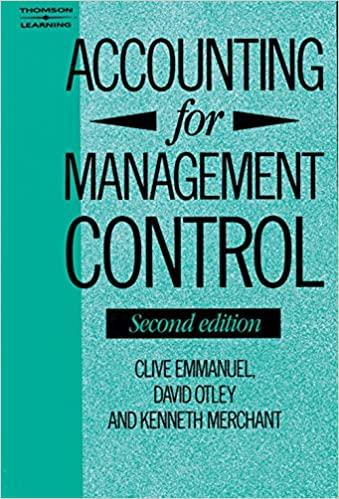Question
7. Which of the following describes the differences between job-order and process costing? A. Job-order costing is used in financial accounting while process costing is
7. Which of the following describes the differences between job-order and process costing? A. Job-order costing is used in financial accounting while process costing is used in managerial accounting.
B. Job-order costing can only be used by manufacturers; service enterprises must use process costing.
- Job-order costing is voluntary while process costing is mandatory.
D. Job-order costing traces costs to jobs while process costing traces costs to departments and averages the costs among the units worked on during the period.
8. Which of the following costs is not added to the Work in Process account in a process costing system?
- manufacturing overhead
- direct materials
- direct labor
- advertising
9. The equivalent units are calculated by:
A. taking the units needed to complete the beginning inventory, adding the units started and taking the equivalent units in ending inventory.
B. taking the units completed plus the equivalent units in ending inventory.
C. taking the total units to account for and subtracting the equivalent units in beginning inventory.
D. taking the units started plus the equivalent units in ending inventory.
10. Department A began the period with 45,000 units. During the period the department received another 30,000 units from the prior department and completed 60,000 units during the period. The remaining units were 75% complete. The amount of equivalent units in Department As work-in-process inventory at the end of the period is:
A. 30,000.
B. 22,500.
C. 15,000.
D. 11,250.
11. Which of the following costs is least likely to be a variable cost?
- sales commissions
- direct labor
- indirect materials
- supervisory salaries
12. Which of the following components are included in a mixed cost?
- a sunk cost and an opportunity cost
- a fixed cost and a variable cost
- a manufacturing cost and a selling cost
- a product cost and a period cost
Step by Step Solution
There are 3 Steps involved in it
Step: 1

Get Instant Access to Expert-Tailored Solutions
See step-by-step solutions with expert insights and AI powered tools for academic success
Step: 2

Step: 3

Ace Your Homework with AI
Get the answers you need in no time with our AI-driven, step-by-step assistance
Get Started


